As of press time, the URLs displayed in this book link or refer to existing websites on the Internet. Random House, LLC, is not responsible for, and should not be deemed to endorse or recommend, any website other than its own or any content available on the Internet (including without limitation at any website, blog page, or information page) that is not created by Random House. Neither the authors nor The Boston Consulting Group, similarly, can be responsible for third-party material.
All rights reserved.
Published in the United States by Random House, an imprint of The Random House Publishing Group, a division of Random House, Inc., New York.
R ANDOM H OUSE and the H OUSE colophon are registered trademarks of Random House, Inc.
Contents

Preface

 N A SMALL FARM amid gently rolling hills, there was once a playful Labrador retriever named Sartre. Every day Sartre would leap over a fence at the back of the farm to run through the woods and chase squirrels. Eventually, the fence was dismantled, freeing poor Sartre from the burden of having to hop over it every time he wanted to frolic, but Sartre still jumped every time he came to the spot where the barrier had been. He had developed a set of memories and assumptions that made it almost impossible for him to notice the fence was no longer there.
N A SMALL FARM amid gently rolling hills, there was once a playful Labrador retriever named Sartre. Every day Sartre would leap over a fence at the back of the farm to run through the woods and chase squirrels. Eventually, the fence was dismantled, freeing poor Sartre from the burden of having to hop over it every time he wanted to frolic, but Sartre still jumped every time he came to the spot where the barrier had been. He had developed a set of memories and assumptions that made it almost impossible for him to notice the fence was no longer there.
Sartres behavior was in some ways similar to that of the three main characters in No Exit, the famous play by the French existentialist philosopher for whom he was named. Garcin, Estelle, and Inez are prisoners in Hell (a boxlike room) who long to leave the claustrophobic space. Yet in the plays final moments, when the door suddenly flies open and they are free to leave, they stay, terrified to step out into the unknown space beyond.
The dogs mistake may seem comical, and the plight of Jean-Paul Sartres pathetic characters a bit heavy-handed, yet both of these stories expose profound truths about human nature.
Every day, all of us create countless mental modelsor what we will refer to here as boxesin order to make sense of the world. Many of these boxes will help you for a whileas Sartre the dogs fence-jumping tactic did for years. But they can also hold you back and make it hard for you to notice important changes around you. Our brains pull us toward the familiar, so we cling to old boxes that may no longer be relevant. Most of us are averse to risk, and try to confirm existing opinions and deny how rapidly and radically things are changing.
In todays ever more turbulent world, such failures of perception can be costly. Relying on your existing boxes to simplify the infinite unknown is useful, indeed unavoidable, but relying too heavily, or for too long, on any mental model can lead you to miss exciting opportunities. It can prevent you from seeing critical breaks in the fence or from achieving success in the abyss of the unknown (which, in essence, is the fate of the characters in Sartres No Exit).
As business strategy consultants with decades of collective experience working with major organizations worldwide, addressing high-stakes challenges that can affect thousands of employees and millions of customers, we have seen that the key distinction between winners and losers, leaders and followers, those who soar in the face of change and those who are defeated by it, comes down to the form of strategic creativity that we refer to as thinking in new boxes. This process marries pragmatic analysis with the free-flowing generation of ideas. When you think in new boxes, you continuously develop and test hypothesesincluding new ways to embrace complexity, navigate uncertainty, and prepare for the disruptions that inevitably await you.
Perhaps you are an entrepreneur introducing a new idea or an architect imagining a dazzling edifice. Or maybe youre an engineer trying to conceptualize a new software program, a politician seeking revolutionary social change, or a manager leading your organization through one of the most perilous economies in modern times. No matter what challenge you face, the creativity process we describe in this book can change how you interpret everything happening around you and how you solve problems. It can improve how you lead your team despite not knowing what lies around the next corner (after all, no one does). You will rediscover the full power of thinking, in all its many dimensions, via our pragmatic system for achieving productive, free-flowing, perspective-expanding, life-enhancing, practical, and sustainable creativity.
Read on, and our system will help you imagine, shape, and then release into the world new designs, strategies, and visions that could help you and your colleagues create the next Post-it note or the next iPador at least help you think of business creativity in a completely new way. It will spur you to dream up multiple future scenarios in which you could be doing business, and thus better prepare for whatever the future holds. And it will even guide you toward a more open way of thinking about your life and show you how to ask the right questions, to better enable you to reach all your goals, both personal and professional.
You will learn to think differently, and more effectivelyand this will change the way you do business, and the way you live your life. And it will be fun. We promise.
 ET S START WITH AN EASY QUESTION: How many colors are there in a rainbow?
ET S START WITH AN EASY QUESTION: How many colors are there in a rainbow?
Would you say five? Seven? Ten? At some point in your schooling, you were probably told that a rainbow has a fixed number of colors. The common explanation is that the human eye sees just seven colorsred, orange, yellow, green, blue, indigo, and violetand hence many of us were told as children that there are seven colors in the rainbow. But thats not quite correcta rainbow is a continuous spectrum of colors, at least according to our models of physics. To cope with complicated ideas such as this (in this case, an infinite number of colors) the mind simplifies, placing the physical reality in a more conveniently sized, manageable box.



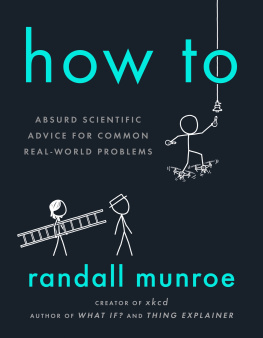
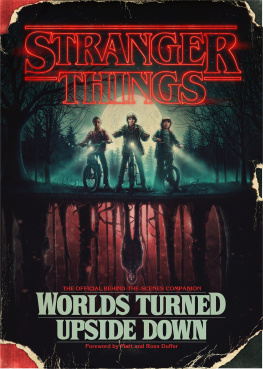
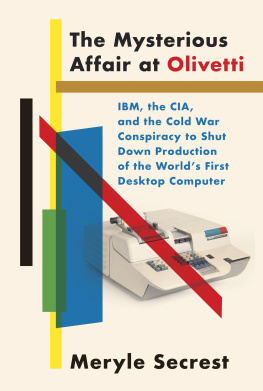

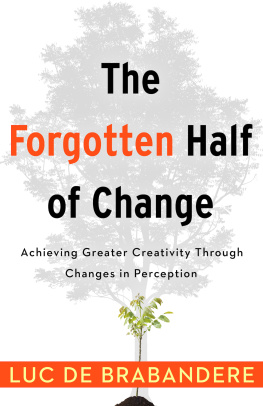
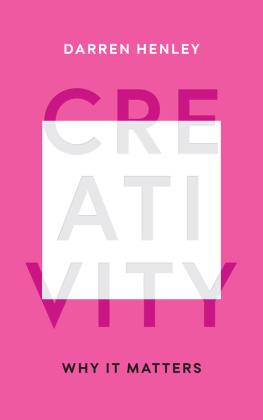


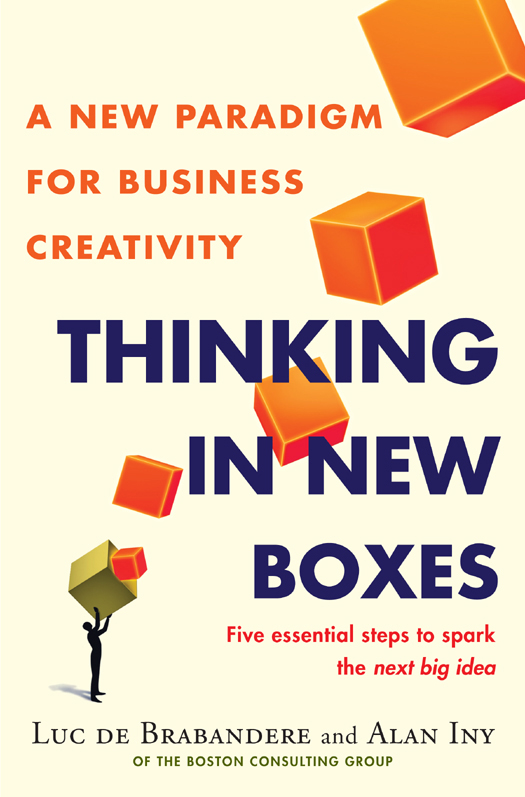
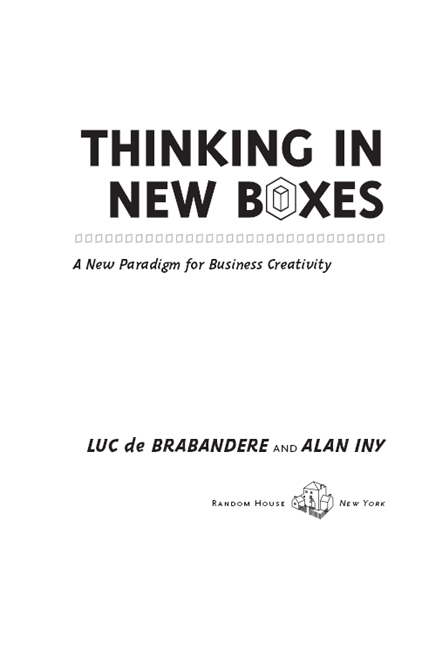

 N A SMALL FARM amid gently rolling hills, there was once a playful Labrador retriever named Sartre. Every day Sartre would leap over a fence at the back of the farm to run through the woods and chase squirrels. Eventually, the fence was dismantled, freeing poor Sartre from the burden of having to hop over it every time he wanted to frolic, but Sartre still jumped every time he came to the spot where the barrier had been. He had developed a set of memories and assumptions that made it almost impossible for him to notice the fence was no longer there.
N A SMALL FARM amid gently rolling hills, there was once a playful Labrador retriever named Sartre. Every day Sartre would leap over a fence at the back of the farm to run through the woods and chase squirrels. Eventually, the fence was dismantled, freeing poor Sartre from the burden of having to hop over it every time he wanted to frolic, but Sartre still jumped every time he came to the spot where the barrier had been. He had developed a set of memories and assumptions that made it almost impossible for him to notice the fence was no longer there.
 ET S START WITH AN EASY QUESTION: How many colors are there in a rainbow?
ET S START WITH AN EASY QUESTION: How many colors are there in a rainbow?